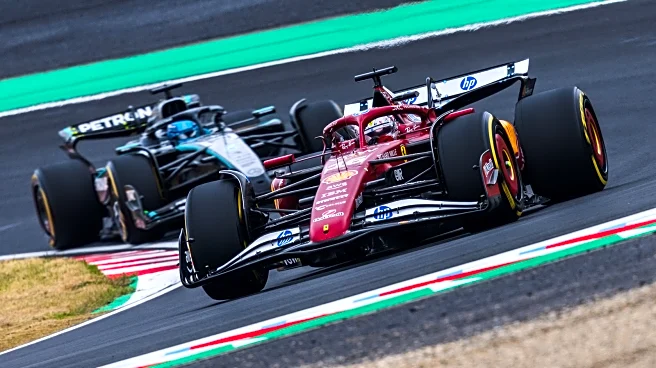
Anyone who follows Formula 1 will know the sport is famous for its complex machinery, where every component is over-engineered for maximum efficiency. That's why the super-simple way in which fluid is delivered to drivers in a race might come as a surprise to many. During a race, cockpit temperatures will soar, and drivers can lose up to four kilos of body weight in fluid, so it goes without saying that staying hydrated is vital. However, instead of a high-tech cooling system or fancy drink-delivery
system, the solution is actually quite similar to what you'd use on a Sunday morning hike.
A bag of liquid holds the drink, usually around 1.5 litres, and it's typically found behind the seat, or packaged down into the nose of the car. Rather than just plain water, drivers often mix water with vitamins, to replace what's lost from their bodies during a race. From this bag, a plastic tube runs directly into the driver's helmet. To help control the flow, a small valve is fitted, and when the driver wants a drink, they simply sip through the tube. When they stop, the fluid returns to that bag, and that's it.
Mercedes has shown off its simple approach, likening it to a "squeezy bag" with a filter and a one-way valve. Other teams — like Red Bull — do use pumps, activated with a button on the steering wheel, but Mercedes has stripped it back to basics to avoid the extra weight and added complications. For a sport that typically thrives on high-tech solutions, the drivers' drinks system is almost laughably simple.
Read more: Why Racing Cars Use Straight Cut Gears
Delivering Water To F1 Drivers Comes With Practical Challenges At 200 Mph

While the concept of a bag and a straw is simple, the execution is not without complications. First of all, it of course has to be completely hands-free, as drivers cannot afford to let go of the steering wheel while negotiating eau rouge at breakneck speeds just to take a sip of water. Engineers also have to factor in every single gram, and even a lightweight pump adds bulk, which is why some teams have abandoned them. Mercedes' straw-and-bag approach saves weight, but others stick with pumps despite the risk of failure.
And failures do happen. Kimi Räikkönen was famously — and somewhat hilariously — told "No, Kimi, you will not have the drink" when his system broke. Such failures can also prove genuinely dangerous. Sergio Pérez was left without water from around lap 20 onwards of the 2021 United States Grand Prix, and described losing physical strength and suffering blurred vision as dehydration set in. A simple pump-free system would've likely saved Perez here.
Another issue is temperature, as the fluid bag isn't refrigerated. Naturally, a bag of water gets pretty toasty in an F1 car, and even if you start with a frozen mix, it won't be long before it's just a bag of lukewarm liquid — hardly refreshing. As a result, some drivers — like seven-time world champ Lewis Hamilton — opt not to bother with taking a drink at all, although that's probably easier said than done in particularly hot climates.
Want more like this? Join the Jalopnik newsletter to get the latest auto news sent straight to your inbox...
Read the original article on Jalopnik.












